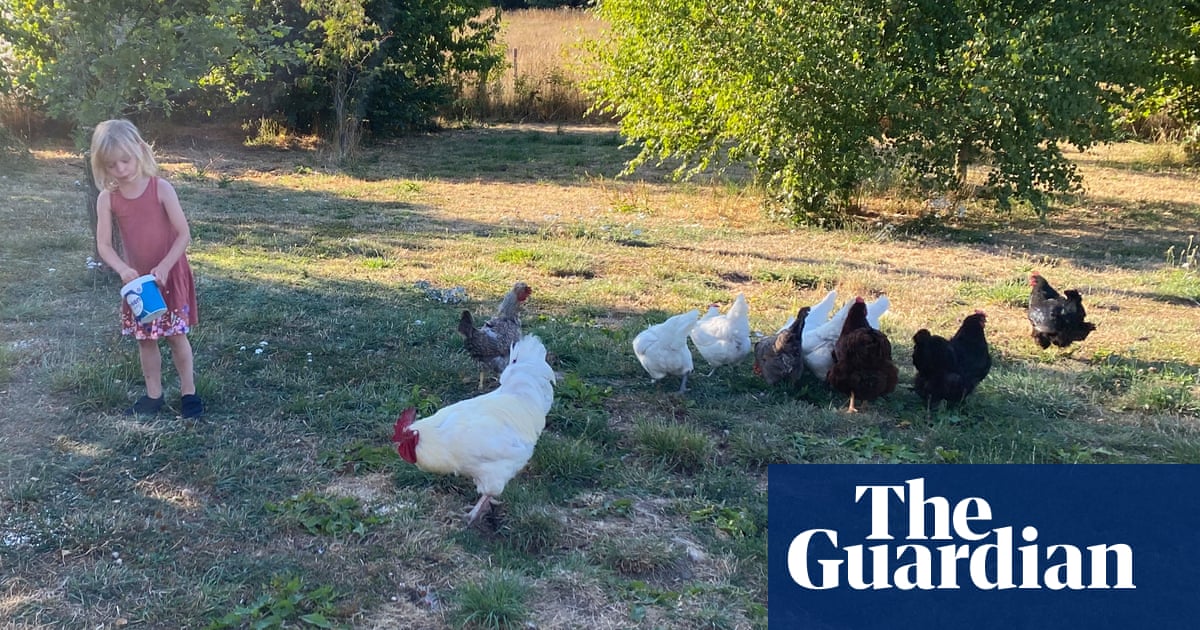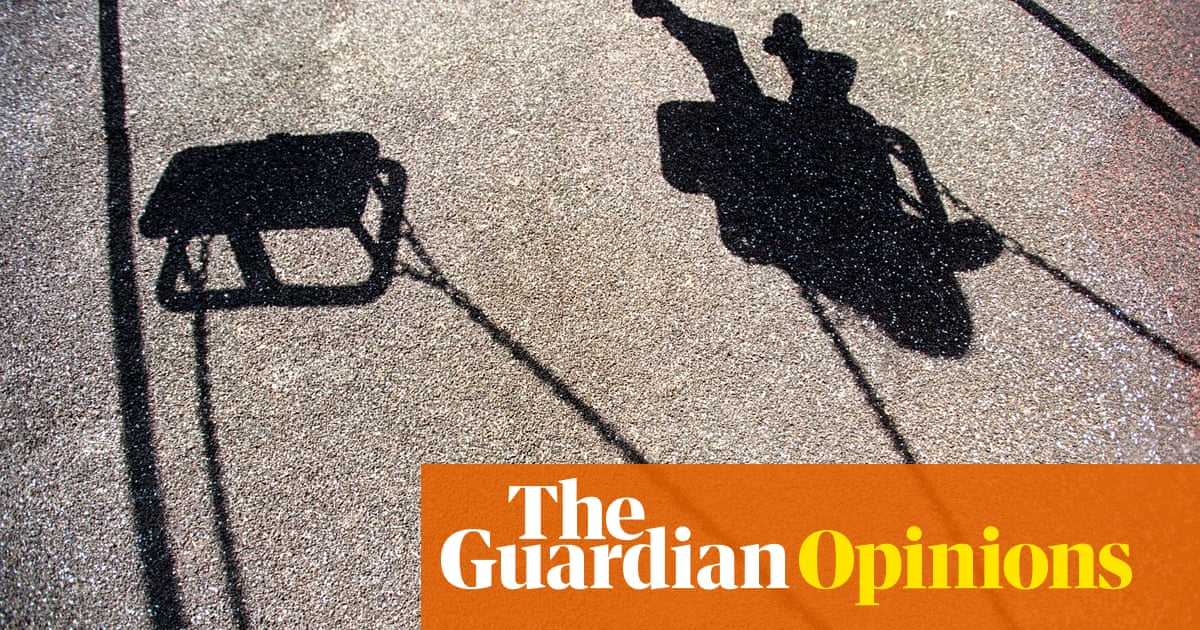
old crowns inset with emeralds, fur-trimmed capes and gowns embellished with glittering diamonds and pearls clothed The House of Abundance as they made their last-minute entrance into a New York City ballroom and their first entrance on to our TV screens in the premiere episode of Pose in June 2018, which aired its final episode on Sunday.
The resplendent opening scene set the tone for what the Steven Canals-created drama has come to represent for the Black and Latino LGBTQ community over its three groundbreaking seasons. The series features the largest number of trans actors in regular roles of any scripted TV show in history – centering the narratives of the Black, Afro-Latino and Latino trans and queer people who birthed and nurtured ballroom culture of the 1980s and 1990s.
“If you risk nothing, you risk even more,” Blanca Evangelista, played by Mj Rodriguez, told Angel Evangelista (Indya Moore), as they prepared to snatch their opulent ballroom costumes from a museum exhibit at the direction of their then house mother Elektra Abundance-Evangelista (Dominique Jackson).
But the risks to their lives existed beyond the spoils they lifted from the museum mannequins that gained their house a rousing chorus of 10s from the ballroom judges.
Despite the glamour and jubilance of the underground ballroom scene of the 80s and 90s, where Black and Latino trans and queer people could safely present however they chose, there was still danger in their day-to-day lives as they faced sweeping transphobia, homophobia and biphobia aimed at limiting the visibility and social influence of the LGBTQ community.
But even with the looming threat of physical violence, discrimination and social alienation, the ballroom community founded a distinctive culture and vogue dance style while leading social justice movements that embodied their freedom, creativity and assurance in who they are.
“Pose does a great thing with giving the community this recovered history that we were there. We were part of making this current world we live in exist, whether you’re credited to it or not,” the Pose ballroom coordinator and activist Jonovia Chase told the Guardian. “You lived it. You breathed it. You contributed to it. And it’s just because you have an extra caveat to your existence – perhaps that Blackness, perhaps that ballroom-ness – those things have not allowed for the culture to be seen as a value to the evolution of where we are today in society.”
Pose’s fictional characters honor the real-life trials and triumphs encountered by countless members of the Black and Latino trans and queer community. These pioneers did not beg to be seen but instead made themselves known on their own terms.
“There were just so many ballroom folks involved with Pose’s [creative and storytelling process] to inspire and to give a human scope around the ballroom community and its dualities,” said Chase. “Twiggy Pucci Garçon, Michael Roberson, Jack Mizrahi, Leiomy Maldonado, Hector Xtravaganza, Sol Pendavis and so many consultants helped give life to the understanding that these arts within ballroom are not just performance – they are activism in their own right. The ball itself is not just the space of entertainment, but it’s actually the epicenter for healing folks and a place for folks discovering themselves. It’s this space to cultivate resilience within the community.”
Candy Ferocity, played by Angelica Ross, gives her all, despite not being the best dancer, and never shies away from speaking her mind. Elektra delivers a spectacular read to a transphobic customer who confronts the Pose women during a group dinner. Meanwhile, Blanca risks her physical safety after encountering transphobic and racist patrons at a popular gay bar, standing up for herself and Lulu Ferocity (Hailie Sahar), when they are refused service.
Even in their moments of great discouragement or doubt, Pose’s characters always find the strength to show up for themselves. Their fortitude while encountering societal and personal challenges offers a stirring reminder that there’s infinite power in standing up for ourselves. This message is especially encouraging for Black and Latino members of the LGBTQ community who continue to face discrimination, racism, phobias, denial of rights, and threats of physical violence four decades after the stories depicted in Pose.
“The gay rights movement didn’t start as a parade. It started as a rebellion and a fight for justice and equality,” Ryan Jamaal Swain, who plays Damon Evangelista on the show, said. “As Black and Latino people, I think that is why we are the chosen and tapped in on a different frequency. We have experienced so much trauma on our bodies, spirits and hearts from the unconscious factors and just societal ideas of us. But then we still end up showing our best selves and still being the curators of the culture.
“Everywhere in American history, you can find a Black or brown person leading the charge or being a part of some kind of civil rights movement. Pose is a made-for-TV rendition of that authenticity.”
Beyond the need to continually show up for ourselves, at the core of Pose is our mandate to also show up for others.
As the trans and queer community faced the uncertainty of the HIV and Aids health crisis and the attack on their social rights – the ballroom offered a safe space of happiness, creative inspiration and fellowship. But that connection lasted long after the lights of the hall dimmed for the night.
“Not only does the ballroom community consist of houses, but people literally grow together and depend on each other outside of those families. People sometimes come from backgrounds where you grew up in a shelter together or you grew up on the streets, just doing whatever you can to survive together,” Chase said. “So in the earlier years and even still today, people recruit people [for houses] in those type of personal exchange ways. But I think largely the ballroom community is socially connected. It’s literally a community. It’s literally a culture.”
In times of need, Pose’s community of Black and Latino trans and queer characters come together to help their own.
Despite Elektra throwing biting disses her way, Blanca warmly welcomes her into The House of Evangelista when the ballroom legend falls on tough times and is left homeless. They all rally together to help Blanca fight an eviction from her nail salon by her ruthless landlord Frederica Norman. And as they battle the HIV and Aids epidemic and witness their community being decimated by the disease, the Pose characters able to employ hope try their best to encourage those left despondent and fearful in the wake of so much loss.
In one of the show’s most memorable episodes, which was directed by the Pose executive producer Janet Mock, the trans women of the community come to Elektra’s assistance when she faces a dire crisis after the overdose death of one of her Hellfire clients.
They are members of a larger chosen family bound together by their creative pursuits in the ballroom and the shared battle against the daily denial of their dignity as trans and queer people of color. And their dedication to uplifting their marginalized community despite the struggles they all face proves that when we protect our community we are in turn covering ourselves.
“I think Pose sometimes sensationalizes this idea that there’s always beef between the houses. Sometimes it’s no beef at all. It’s just a competition. It’s just for the floor,” said Chase. “Of course, things get heated outside of that arena. But at the end of the day, we all know that we are the ones on the margins. We kind of only have ourselves and [the ballroom community] to hold on to and know we can feel comfortable in ourselves and at peace.
“It’s literally a space in which people can find and create their own sense of belonging. And that’s very personable. That connection that is built and grown through community is never taken away.”
At the heart of the series, Pose is rooted in community and self-pride.
Pose’s characters aren’t victims to their circumstances. They use their talents, knowledge, and determination to uncover solutions to life’s inevitable obstacles, fight for their dreams, and proudly exclaim their humanity in a society often threatened by their freedom. In their darkest moments, the show’s characters find a way to tap into optimism, never fully conceding their joy to their personal pain or the collective heartache faced by their community.
“You take this group of marginalized people. These people that society told they’re not deserving of love and they don’t need love. Then you teach the world how to love every one of them. That’s the really powerful moment,” said Swain. “[Pose] is such a good show to the point you can bring blue, black, green, yellow people on the screen and they tell this very specific story, and they are able to tap into everyone universally. That’s the cycle of great television, great storytelling, and just humanity.
“I’m so thankful that I was chosen [for Pose] because it liberated me. It made my walk a little taller. I found myself even more and I’m more aware and informed. I’m also very honored and privileged to be a part of this community.”
Pose has shown us that love of self and love of others is the foundation of our legacy in this unpredictable world.
Though many factors are out of our control, how we affect others is completely at our discretion. And we can continually use Pose as a guide in the unscripted reality of our own lives – following its example to stand in our truth boldly, work to elevate others as we uplift ourselves, and always pose proudly in our purpose.











